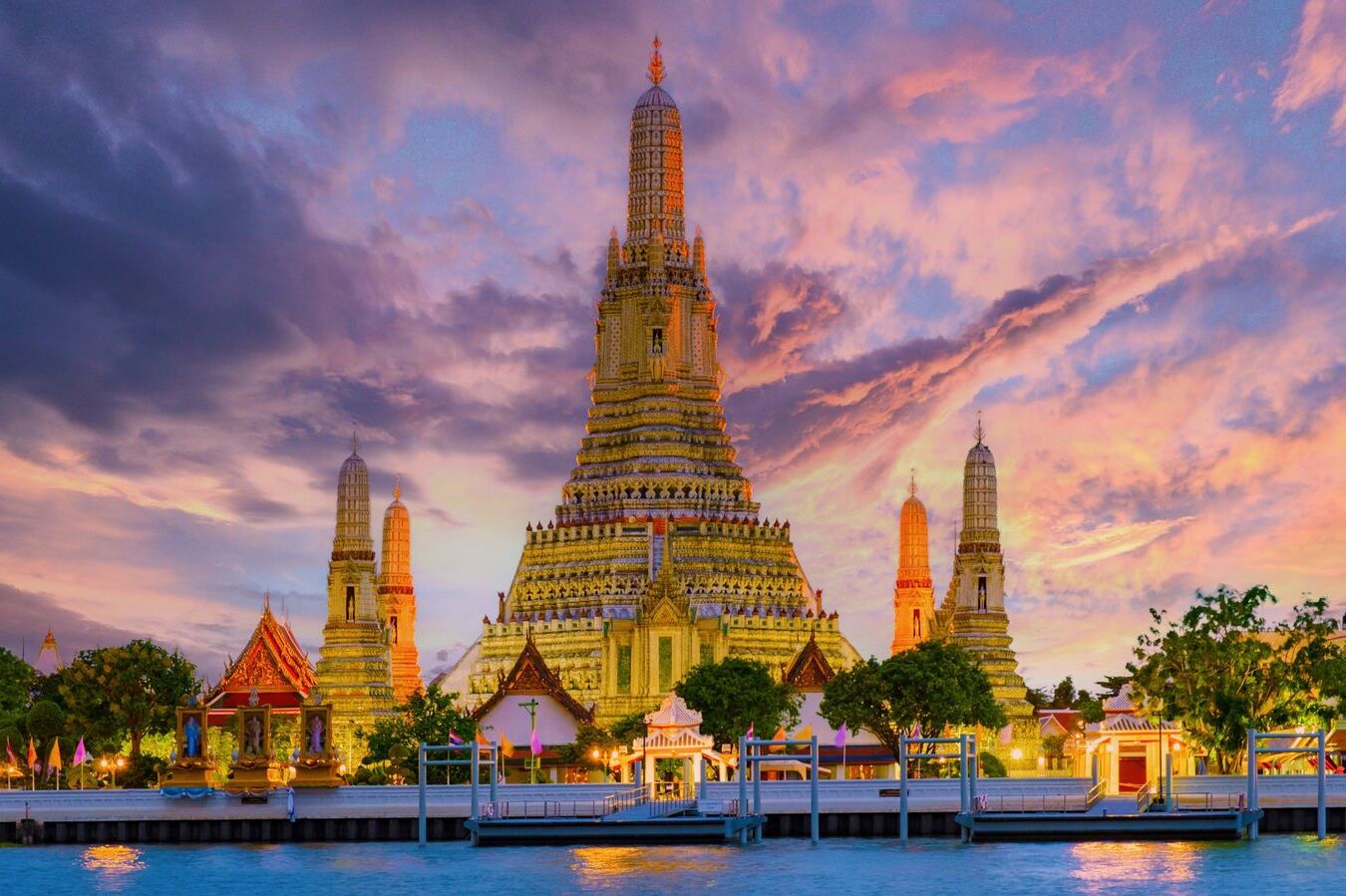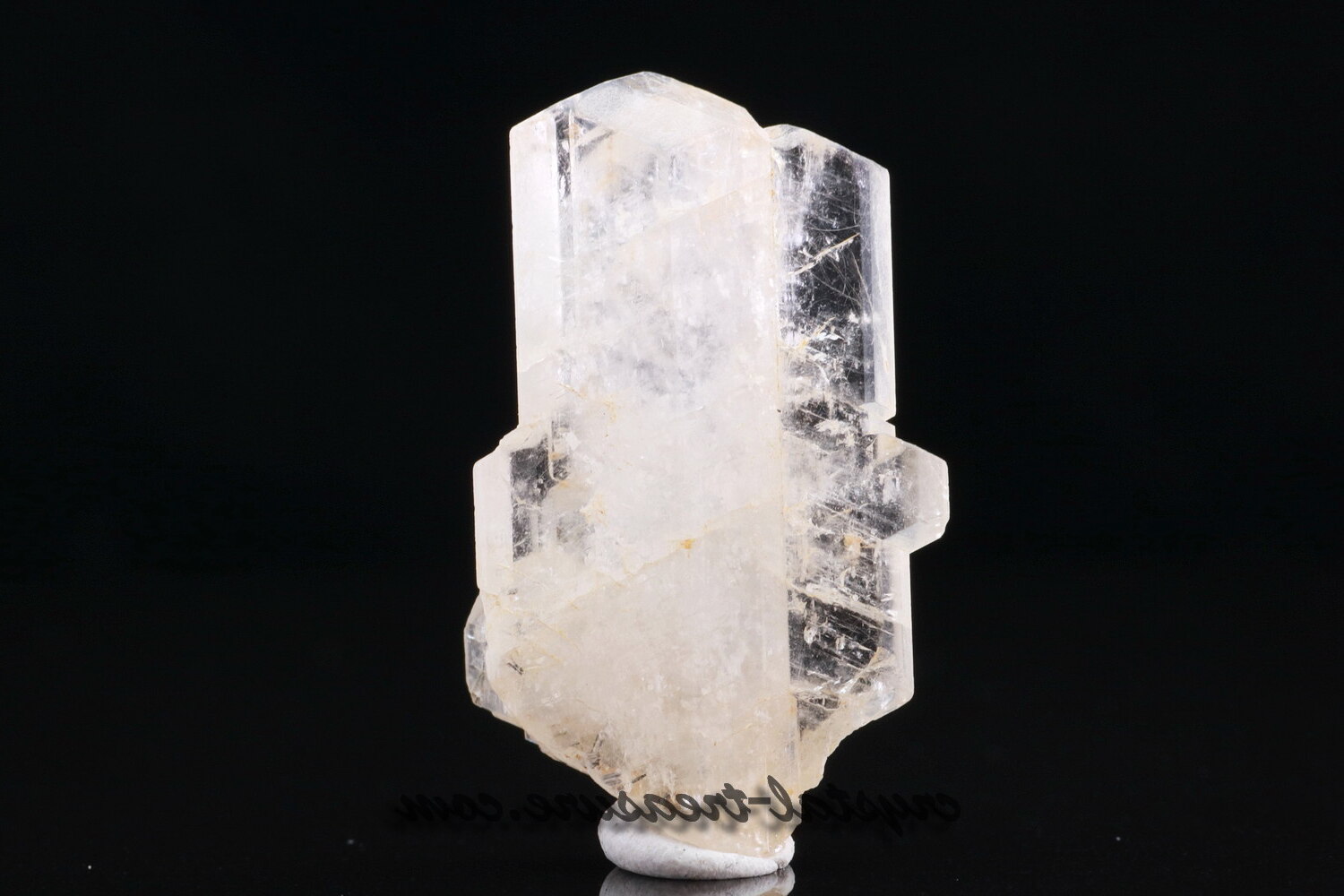
Wat Arun, also known as the Temple of Dawn, stands majestically on the banks of the Chao Phraya River in Bangkok, Thailand. This iconic landmark, with its stunning spires and intricate designs, attracts visitors from around the globe. But what makes Wat Arun so special? Its history, architecture, and cultural significance are just a few aspects that captivate the imagination. Did you know that the temple's central prang is adorned with colorful porcelain and seashells? Or that it offers breathtaking views of the sunrise and sunset? Wat Arun isn't just a temple; it's a symbol of Thailand's rich heritage and artistic brilliance. Ready to learn more? Let's dive into 35 fascinating facts about this architectural marvel!
Key Takeaways:
- Wat Arun, also known as the Temple of Dawn, is a historic and stunning temple in Bangkok with a rich cultural and religious significance. It features a towering central prang adorned with colorful porcelain, making it a must-visit for anyone traveling to Thailand.
- The temple's unique design, cultural importance, and annual festival during the Thai New Year, Songkran, make Wat Arun a fascinating and memorable destination. Its preservation efforts ensure that future generations can continue to enjoy its beauty and significance.
Wat Arun: The Temple of Dawn
Wat Arun, also known as the Temple of Dawn, is one of Bangkok's most iconic landmarks. This stunning temple, located on the west bank of the Chao Phraya River, is a must-visit for anyone traveling to Thailand. Here are some fascinating facts about Wat Arun that will make you appreciate this architectural marvel even more.
Historical Significance
Wat Arun has a rich history that dates back centuries. Its origins and evolution are deeply intertwined with Thailand's cultural and religious heritage.
- Wat Arun was originally built in the 17th century during the Ayutthaya Kingdom.
- The temple was named after Aruna, the Indian God of Dawn.
- King Taksin the Great ordered the temple's restoration after the fall of Ayutthaya in 1767.
- Wat Arun served as the royal chapel for King Taksin's palace.
- The temple housed the Emerald Buddha before it was moved to Wat Phra Kaew.
Architectural Marvel
The design and structure of Wat Arun are nothing short of breathtaking. Its intricate details and towering spires make it a masterpiece of Thai architecture.
- The central prang (tower) of Wat Arun stands at about 70 meters tall.
- The prang is decorated with colorful porcelain and seashells.
- Four smaller prangs surround the central tower, each representing the wind god Phra Phai.
- The temple's design is influenced by Khmer-style architecture.
- Wat Arun's prang is illuminated at night, creating a stunning visual effect.
Cultural and Religious Importance
Wat Arun is not just a tourist attraction; it holds significant cultural and religious value for the Thai people.
- The temple is dedicated to the Hindu god Aruna, who is often depicted as the charioteer of the sun god Surya.
- Wat Arun is a symbol of the birth of the Rattanakosin Period and the founding of the new capital after Ayutthaya's fall.
- The temple is a popular site for Buddhist ceremonies and rituals.
- Wat Arun is considered one of the six highest-grade royal temples in Thailand.
- The temple complex includes a monastery and a school for monks.
Unique Features
Wat Arun boasts several unique features that set it apart from other temples in Thailand.
- The temple's central prang is adorned with intricate floral patterns made from broken Chinese porcelain.
- Wat Arun's steep steps symbolize the difficulty of reaching the heavens.
- The temple has a pair of mythical giants, or yaksha, guarding its entrance.
- The Ordination Hall houses a golden Buddha image designed by King Rama II.
- The temple's grounds feature beautiful gardens and statues of Chinese soldiers and animals.
Visitor Experience
Visiting Wat Arun offers a unique and memorable experience. From its stunning views to its serene atmosphere, there's something for everyone.
- Climbing the central prang offers panoramic views of the Chao Phraya River and Bangkok skyline.
- The temple is best visited at dawn or dusk for the most spectacular lighting.
- Wat Arun is accessible by ferry from the Tha Tien Pier.
- The temple complex includes several pavilions and shrines worth exploring.
- Wat Arun hosts an annual festival during the Thai New Year, Songkran.
Fun Facts
There are some lesser-known, fun facts about Wat Arun that add to its charm and mystique.
- Wat Arun appears on the 10-baht coin.
- The temple has been featured in several movies and TV shows.
- Wat Arun's prang was once the tallest structure in Bangkok.
- The temple's name is often mistranslated as "Temple of the Dawn," but it actually means "Temple of Aruna."
- Wat Arun's design incorporates elements from both Hindu and Buddhist traditions.
Preservation and Conservation
Efforts to preserve and maintain Wat Arun ensure that future generations can continue to enjoy its beauty and significance.
- The temple underwent a major restoration from 2013 to 2017.
- Conservation efforts focus on preserving the delicate porcelain decorations.
- Wat Arun is a UNESCO World Heritage Site candidate.
- The temple's maintenance is funded by both government and private donations.
- Wat Arun's preservation is a collaborative effort involving historians, architects, and artisans.
Wat Arun's Timeless Allure
Wat Arun, or the Temple of Dawn, stands as a testament to Thailand's rich history and architectural brilliance. Its towering spires and intricate designs captivate visitors from around the globe. This iconic landmark, nestled along the Chao Phraya River, offers a glimpse into the country's cultural heritage. From its origins in the Ayutthaya period to its restoration under King Rama II, Wat Arun's story is one of resilience and beauty.
Whether you're marveling at its stunning mosaics or climbing its steep steps for a panoramic view of Bangkok, Wat Arun promises an unforgettable experience. The temple's significance goes beyond its physical beauty, embodying the spiritual and historical essence of Thailand. So next time you're in Bangkok, make sure to visit Wat Arun and immerse yourself in its timeless allure.
Frequently Asked Questions
Was this page helpful?
Our commitment to delivering trustworthy and engaging content is at the heart of what we do. Each fact on our site is contributed by real users like you, bringing a wealth of diverse insights and information. To ensure the highest standards of accuracy and reliability, our dedicated editors meticulously review each submission. This process guarantees that the facts we share are not only fascinating but also credible. Trust in our commitment to quality and authenticity as you explore and learn with us.


